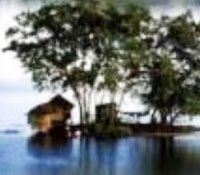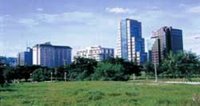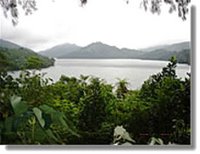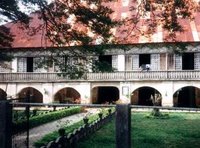
St. Benedict's Monastery, as its name indicates, has St. Benedict, the great father and founder of monasticism, as it's Patron Saint.
The monastery started with very humble and pure origins.
Three monks of South Indian origin were sent from Rome by the Abbot General Rt. Dev. Andrea Pantaloni, OSB to begin a monastery in Cebu, Central Visayas, Philippines, more precisely in the town of Carmen.
The monks were invited by His Eminence Ricardo J. Cardinal Vidal, Archbishop of Cebu. The three monks from Kerala, India are: Rev. Frs. Thomas Thekkumthottam OSB, Bernard Devasia Kallakavunkal OSB and Joseph John Manjadyil OSB.
They reached Carmen in February 10, 1999, which is the feast day of St. Scholastica, the twin sister of St. Benedict.
The monks organized medical and dental camps monthly for the poor people of the mountain barangays. Many doctors and hospitals from Cebu City helped them in this. They organized gift programs for poor families with the help of businessmen and rich families of the city.
Slowly the monastery began to be a center of activity. Counseling, Confession, Healing Prayer and consoling the afflicted became a major activity of the monks.
A center for Reflexology foot therapy and free clinic was opened with 15 of the local people trained as therapists. The monks started the Holy Rosary for the people daily in the evening at 4:30 p.m.
In 2003, Our Lady of Manaoag Rosary Center was blessed by Cardinal Vidal, Archbishop of Cebu. The Rosary Center is a big building almost like the church and it contains 20 life-size paintings of the Mysteries of the Holy Rosary. This is probably the only one of its kind in the world.
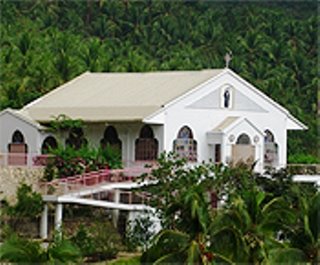
These paintings are the imitation of the 15 th and 16 th century paintings from Europe, done by two artists from Cebu. About two thousand people were present for the blessing of the Rosary Center. Within one year, over 40,000 pilgrims visited this place of pilgrimage.
Side by side with the Rosary Center, a huge Sto. Nino, in cement was also built near the church. This Sto. Nino is a twelve feet statue on a twelve feet base and is supposed the biggest anywhere. This also attracts pilgrims to visit this place especially those devotees of St. Nino.
According to the history of the Philippines, Magellan the Spanish Navigator brought a small statue of Sto. Nino or Child Jesus to Cebu and slowly the whole of Cebu and later the whole of Philippines became Catholic.

Today, the Philippines is the only Catholic country in Asia and second biggest after Mexico in the world. Around 75% of the 84 million population is Catholic.
Near the Rosary Center are two other smaller shrines. The first is the lovely little Oratory of Beato Pedro Calungsod. Pedro Calungsod is the only Cebuano Saint, beatified by Pope John Paul in 2000.

Pedro was a young man from Cebu, missionary, catechist, migrant, lay minister, who was martyred in the island of Guam in the Pacific in the 16 th century. In this Oratory, many cancer patients claim to have been healed. Under the Oratory is the grotto of Saint Benedict, a small little haven of silence, so conducive to prayer and contemplation.
All these places of prayer and pilgrimage were built by the generous support of the hundred sick people who were here and pilgrims who flocked here for prayer.
These institutions are located in a panoramic natural landscape, surrounded by high hills and creeks, which create a unique impression of Mother Nature's beauty and human labor.
Just facing the church is the famous bat cave of Carmen, which is a major tourist attraction. Millions of rice-bats come out of this cave in the Philippines where millions of rice-bats, which is rare indeed, can be seen together and so well. This cave was once featured in the National Geographic Channel.
As the number of young men wanting to follow the monastic way of life increased, the need for building up a bigger monastery was felt. So with the help of hundreds of benefactors, the present monastic building was completed.
The monastery is a very simple but elegant architectural poem built amidst the green mountains and blue sky, with the mountain line gradually receding into a thin basin of sea front.

Today this remote village has become a spot on the world map of pilgrimage.
The monks have toiled hard and prayed in the past six (6) years to transform this place and the people according to the motto of the Holy Father St. Benedict “Ora et Labora” ie. Pray and Work.
At present, the strength of the monastery is eleven monks and 25 postulant members. (benedictinesil.org)






